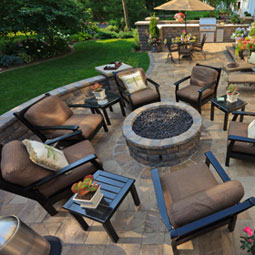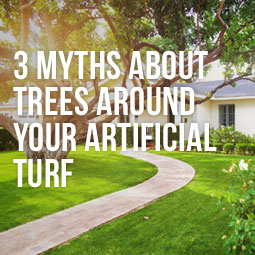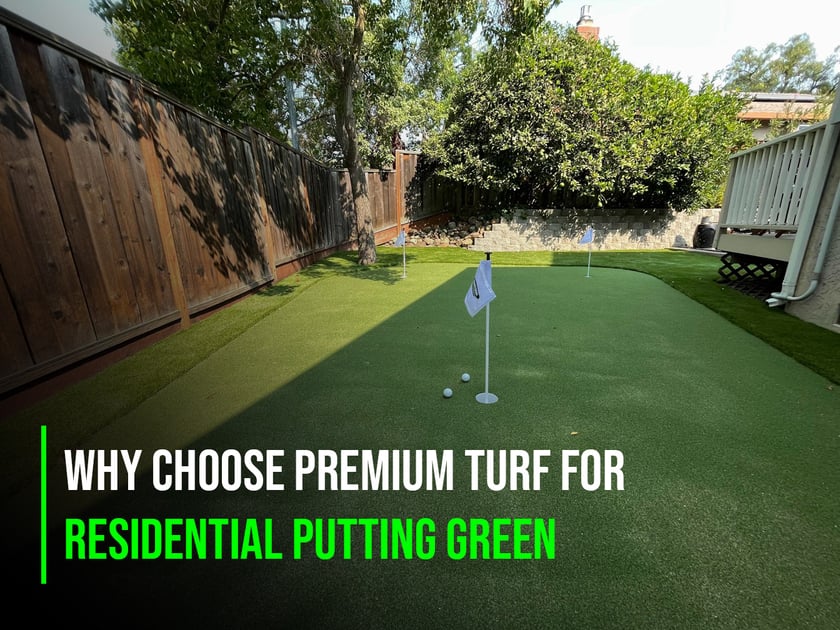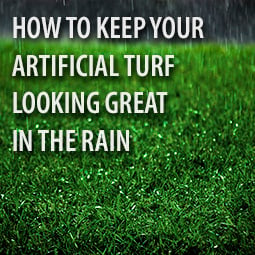INTRODUCTION
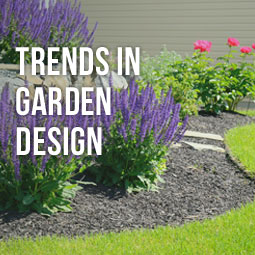 Gardens – and gardening – are growing. We’re embracing our personal outdoor space in more ways than ever, and we’re designing that space as a reflection of ourselves. In fact, individualism is one of the big trends in garden design today. Perhaps that’s fueled by the fact that we have almost unlimited options available to us now – not only plants, but interesting alternatives in everything from hardscapes to outdoor furnishings.
Gardens – and gardening – are growing. We’re embracing our personal outdoor space in more ways than ever, and we’re designing that space as a reflection of ourselves. In fact, individualism is one of the big trends in garden design today. Perhaps that’s fueled by the fact that we have almost unlimited options available to us now – not only plants, but interesting alternatives in everything from hardscapes to outdoor furnishings.
Garden design is all about quality of life. We want comfort, utility, and aesthetic beauty all year round. And we find the process of creating those things more satisfying than ever. In a 2017 survey, Americans said the best things about gardening were:
- Being outside in the fresh air (74%)
- Watching something grow and thrive (58%)
- Being active (54%)
- Engaging with nature (53%)
- Seeing the visible success afterwards (52%)
We’re focusing on our health and overall well-being. Bringing more beauty and joy into our busy lives, and deliberately making time to kick back. Less yard maintenance and more outdoor living. Sustainable practices that support Mother Nature’s health and well-being as well as our own. All of these trends explain why artificial grass has become a foundational element in modern garden design.
We’re signing up for seed-of-the-month clubs, catalogs, and other services that bring new ideas and plants right to our front door. We’re shopping online for gardening tools, accessories, and live plants, again to find just the thing that will make our space complete and completely our own.
Instead of shunning wild critters, we’re deliberately inviting birds, bees, butterflies, and even bats into our yards. These little guys help us combat unwanted pests naturally, they pollinate our plants, and they bring us an unending show of color and entertainment.
Nurseries are feeding our desires for greater personalization by offering an ever-increasing variety of plant options to help us achieve just the look we want. To feed the trend toward downsizing that many people have embraced, plant hybridizers are also producing more compact versions of favorite trees, shrubs, and even perennials.
Whether your space is large or small, whether you prefer Zen-like simplicity or masses of colorful flowers à la Monet, you can create the garden of your dreams. Space for the ways you and your family most love to live outdoors – sitting around relaxing, entertaining, eating, playing, and actively digging in the soil to grow flowers and herbs and veggies.
Keep in mind that many ideas that work for backyard garden design work just as well in front of your home. You can add privacy and create a sense of intimacy with imaginative screening made from wood or metal, or create a living screen with a vine-colored trellis, tall grasses, or a narrow hedge.
Embracing the small garden in your backyard
Even a small garden can achieve big goals, if you plan carefully. It can expand your outdoor living space, offer quiet sanctuary or the perfect setting for a romantic summer dinner for two. It can reveal a constantly-changing display of colors, textures, and scents. Best of all, whatever you design will be truly yours – a one-of-a-kind reflection of your personality and lifestyle.
You can create a space where flowers and foliage take center stage, with scaled-down traditional landscape techniques and smaller-scale plants. You can build planters into your hardscape design. And you can plant almost anything in containers, too, giving you pretty, practical, and portable garden accents.
With limited space, choose plants that will give you a multi-season show. Choose a simplified color scheme to avoid overwhelming your space with too many visuals. Pull it all together with a spot of fluffy green grass – artificial grass, that is. It’s always gorgeous, and grows in any size or shape space.
And don’t forget the snacks. Even the smallest garden can accommodate veggies and herbs as well as ornamentals.
The Edible Garden
The number of Americans growing their own veggies and fruits at home is soaring, and for good reason.
You can grow all your culinary favorites, especially veggies that are hard to find or overly expensive in stores. You don’t have to wonder about the source of your food. And, besides, it’s fun to watch things grow and harvest rewards you can eat!
Once you’ve picked a sun-warmed tomato or berry and popped it into your mouth, you’ll know what candy really tastes like. A garden design that includes edibles – or features them – produces some real eye candy, too. Many fruit trees provide lovely shade, and some, such as apples, fit beautifully espaliered along a wall.
If you have only a tiny space, fun speckled lettuces, bush-style squash and trellis-trained peas or beans are all as pretty as any annuals. And in our mild South Bay Area climate, woody thyme, sage, and rosemary are handsome evergreen additions to any garden. In fact, there are lots of winter garden veggies you can grow here.
Just think how impressed your family and guests will be when you serve them summer beverages or a full course dinner made with your own secret ingredients, direct from your garden.
Creating outdoor dining areas
From hot dogs and burgers on the grill to formal wedding receptions, we love to eat outdoors. With the dogs-and-burgers routine, you don’t even need furniture. You can flop out on the grass, paper plate an
d beverage in hand. Thanks to your artificial grass lawn, the grass is always lush and inviting to accommodate bare feet and shorts-clad bottoms.
For most occasions, though, it’s more practical to create an outdoor dining area. The shops and online sources are replete with furnishings, from basic to elegant. Whatever your style, design experts recommend placing your table and chairs in a central location, so everyone at the table has a lovely view toward some part of your garden. Consider adding a pergola or umbrellas if the location isn’t naturally shaded.
Backyard dining and entertaining have become such an integral part of our lives, many home owners are now building an entire outdoor kitchen to accompany their al fresco dining area. Who knows? This may be the year you finally make the switch to barbecued turkey for Thanksgiving.
How to Plan for an Attractive Winter Garden
Many people expect their garden to automatically go dead and dormant over the winter. But why? It’s so easy to design a garden that is as attractive in winter as it is in summer – though perhaps in different ways. We noted earlier that there are lots of fall and winter veggies you can easily grow in your South Bay Area garden. And, of course, your artificial grass will look as pretty as ever. But that’s just the beginning.
Look for:
- Traditional evergreens (holly, juniper, cypress, rhododendrons, etc.) give your garden year-round structure. But consider “evergreens” that are gray and have very different leaf shapes – lavender and many types of artemisia, for example.
- Several varieties of trees and shrubs have colorful bark, such as some Japanese maples, birches, or red and yellow twig dogwood. Others have dramatic peely bark or twisty branches. You hardly notice these details until the leaves fall, then wow!
- Viburnum, cotoneaster, pyracantha, rugosa roses, and numerous other shrubs produce pretty berries in shades of blue, purple, orange, and red that can last all winter long.
- Go low, with evergreen groundcovers such as colorful sedums or woolly thyme. (You’ll get tiny summer flowers, too.)
By choosing the right plants, you’ll have plenty of reasons to admire the view out your window and venture out into your garden to see your winter lovelies up close.
Trends: Shared Garden Projects
Sometimes you want to grow a particular type of plant in your garden but it just doesn’t fit. For instance, many of us with standard suburban size backyards or who live in condos and apartments don’t have room for a sizeable veggie garden. Or rows of cutting flowers we can use to decorate our house. Shared, or community, gardens solve that problem.
They’re popping up everywhere. In fact, community gardening is such a hot trend in the US, participation tripled between 2008 and 2013. Shared gardens are an efficient, sustainable use of space. They beautify community common areas, give people access to more wholesome, less costly food, and bring folks together as neighbors and fellow “green thumbs.”
No green thumb? Community gardens are filled with teachable moments and willing teachers. No community garden near you? Get together with your neighbors to grow different produce and share the proceeds among yourselves.
Welcoming places for wild critters
Almost any garden that includes flowers will draw butterflies and bees. But now that most of us are trying to be more sustainable, we’re looking for ways to invite and support the tiny creatures who survive off plants. It’s easy to design a garden that conserves water yet attracts all sorts of birds as well as butterflies and bees.
Bright colored tubular flowers, especially shades of red, attract hummingbirds. Flatter, daisy-like flowers attract butterflies that need to sit still as they sip nectar. Fruits and berries call in birds. You could add a bird feeder, but if you choose your plants strategically, your feathered friends will have a tempting menu without it.
The one thing they all need is water. Add a birdbath, and your garden will be The Place to congregate.
Incorporate an artificial grass lawn, and you’ll really be in business. One of the nicest things about fake grass is that you can say goodbye to the wild critters you don’t want in your yard. Instead of waging war on gophers, moles, rabbits, and their friends who can quickly ravage a natural grass lawn, you can enjoy a garden of tranquility, filled with singing birds and silently beautiful butterflies.
“Planting local” in your garden
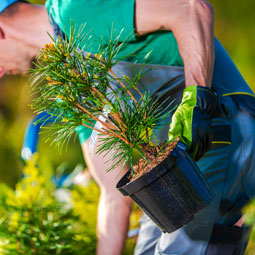 The “shop local” trend has gone mainstream, one reason farmers’ markets are so popular. You can adopt that same concept in your garden design, with native plants. Natives are perfectly suited to our climate – naturally drought-tolerant because they’re adapted to our average annual rainfall. That makes them an ideal accompaniment to your water-free artificial grass lawn.
The “shop local” trend has gone mainstream, one reason farmers’ markets are so popular. You can adopt that same concept in your garden design, with native plants. Natives are perfectly suited to our climate – naturally drought-tolerant because they’re adapted to our average annual rainfall. That makes them an ideal accompaniment to your water-free artificial grass lawn.
You can create a surprisingly beautiful space using nothing but native trees, shrubs, and perennials, thanks to the fact that northern California offers a multitude of options. No need to head into the wilds to dig them up (you should never do that!). Natives are so popular, local nurseries offer wonderful selections, and great advice about grouping them.
You can also intermingle natives with some of your non-native favorites. Whatever you choose, you can design an impressive year-round display that cleverly takes advantage of local materials to reflect your unique personality.
Using recycled Materials in Your Hardscaping
It makes perfect sense to replace hot, harsh patios and walkways and pool surroundings with pretty, barefoot-friendly artificial grass. But that doesn’t mean you should do away with hardscape elements in your garden. In fact, hardscapes are trending right now – for practical installations such as fire pits and gazebos as well as decorative focal points such as statuary and water features.
Recycled materials can help you create hardscape designs that are more eco-friendly and more interesting. Choose stepping stones made from recycled concrete. Or make your own, topping the concrete with recycled glass or ceramic pieces for a mosaic look. Created an elevated walkway with recycled pallets.
Show off your whimsical side by bringing “found objects” into your garden. Give them new functional life – say by using an old garden gate as a trellis or a child’s toy as a planter. Or simply give them pride of place as garden art.
No rules, here, just imagination gone wild. Look for finds and inspiration at thrift shops, flea markets, garage sales, or alongside the road.
Low Water Landscaping
By now, every man, woman, and child in California knows that a natural grass lawn is the #1 culprit when it comes to wasting water around the home. Watering lawns is no longer acceptable. But who cares? Installing an artificial grass lawn is the obvious solution, and it’s the perfect foundational element for a yard filled with low water landscaping.
You can surround your faux grass with drought-tolerant trees whose leafy canopies provided cooling shade. You can choose among dozens, if not hundreds, of other plants that conserve water, too. Even lovely ornamental grasses. However, low water doesn’t mean no water. When dry times turn into unrelenting drought, even the most water-wise plants need help. Wind on warm days and other natural occurrences can also dry your garden.
The key to low water landscaping is to choose plants that require a minimum of water, and then plan a watering system that gives them what they need without waste. For example, soaker hoses and direct-to-plant irrigation lines are easy to install, and putting them on a timer avoids over-watering.
Edging with Patterned Plants
Nothing looks prettier around the perimeter of your emerald green lawn than a colorful border. Flowers and ornamental grasses also soften the edges of pathways, patios, and your driveway.
You can plant a border to create any pattern you want – geometric blocks of color, undulating waves, etc. Keep in mind that an overly rigid pattern will not be pleasing to the eye. There is nothing in nature that looks that formal. And, in fact, studies show that perfect symmetry is off-putting to the eye. So stay away from straight rows of color or alternating blue-yellow-blue-yellow, etc.
Go bold with bright reds, yellow, and oranges. Or stay cool with blues and purples. Pick a single color and mix it up with different shades from pastel to deep. For a fun and trendy multi-color look, zero in on a particular variety of flower that has bi-color or patterned blossoms. You can also create patterns by varying plant heights. Or by focusing on different leaf shapes or sizes or colors.
For any pattern based on flower color, consider the impact of seasonal change. For instance, as spring blooms come into play they will cover the leaves of bulbs that are dying back. Later, you can circle back to fall-blooming bulbs.
Plants and Trees that Resist Wildfires
We tend to believe that, when wildfires occur, everything in their path is destroyed right down to the ground. We certainly saw that with the fires up north and over on the coast last year. But we also saw photos of homes and vineyards that were spared. How does that happen?
You can improve your home’s ability to fend off wildfire by choosing fire-resistant plants and trees for your garden design. None of them are fire-proof, but living plants which are naturally water-retentive don’t burn as easily. Since that makes them poor-quality fuel, they can serve as a barrier to deflect or slow the progress of a fire. Think of it like trying to burn a damp log in your campfire or fireplace.
A side benefit for home owners is that fire-resistant plants and trees also tend to be drought-resistant, for the same reasons. They can be very beautiful despite their toughness. And many of these trees, shrubs, and perennials are locally indigenous. So you can “go native” and protect your home with the same garden design.
Vertical Gardens
We talked earlier about the popularity of small gardens – and how there are so many ways to create a stunning and practical space in limited (or oddly-shaped) square footage. But we didn’t talk about going vertical, a trend that has found a permanent place in many gardeners’ hearts.
If you have a climbing hydrangea on your fence or wall, clematis on a trellis, or an espaliered fruit tree, you’ve been gardening vertically for years. What’s new is creating planters that can be permanently or temporarily attached to a wall (or any upright surface strong enough to hold the planter and wet soil). This gives new meaning to the term “yard art,” and it expands your capacity to grow smaller veggies as well as flowers, succulents and the like.
You can repurpose almost anything to create a vertical planter – sections of gutter and old pallets are popular. But going vertical is such a “thing” now, you can buy pots with hangers already attached at any garden center.
Finally, you can do something useful and attractive with that ho-hum wall or fence. And you can save ground space to expand your fluffy faux grass lawn.
Using Blocks of Color in Your Garden
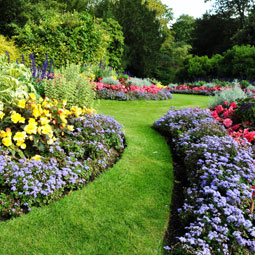 Landscape designers recommend using blocks of color because they make a greater impact. That seems obvious, but it’s easy to overlook that fact when you’re a plant lover determined to exhibit as many examples of your love as possible in your garden. If that’s you, restraint may be called for here. Planting one of everything will give you a cluttered jumble.
Landscape designers recommend using blocks of color because they make a greater impact. That seems obvious, but it’s easy to overlook that fact when you’re a plant lover determined to exhibit as many examples of your love as possible in your garden. If that’s you, restraint may be called for here. Planting one of everything will give you a cluttered jumble.
Instead, think two or three, or several, plants when considering color blocks. On the other hand, it takes just one flowering crabapple in the middle of your lawn to put on a major color display. Another exception to the rule is when you want a dramatic contrast – say a bright yellow rose that draws the eye to the back of your garden.
Colors evoke specific emotions. You can set a soothing mood with cool tones, or generate excitement with bright, warm tones. You can also define “rooms” within your garden using different color themes. Whatever your landscaping goals, note that darker colors tend to disappear in shade, whereas white and pastels stand out in shady spots and at night.
CONCLUSION
Lovely landscaping is a major plus when it comes time to sell your home. So go forth and garden to your heart’s content, happy in the knowledge that you’re doing something eminently satisfying for yourself and your family right now, and building equity for the future as well. You can follow the latest trends to show off your innovative side, or create an old-fashioned oasis just like Grandma had.
Just don’t forget the grass. Every garden needs some, whether it’s a lily-pad space to wiggle your toes or an expanse to accommodate your family football team. Artificial grass continues to be trendy, but it’s no fad. The more you learn about the benefits, the more impressed you’ll be.



